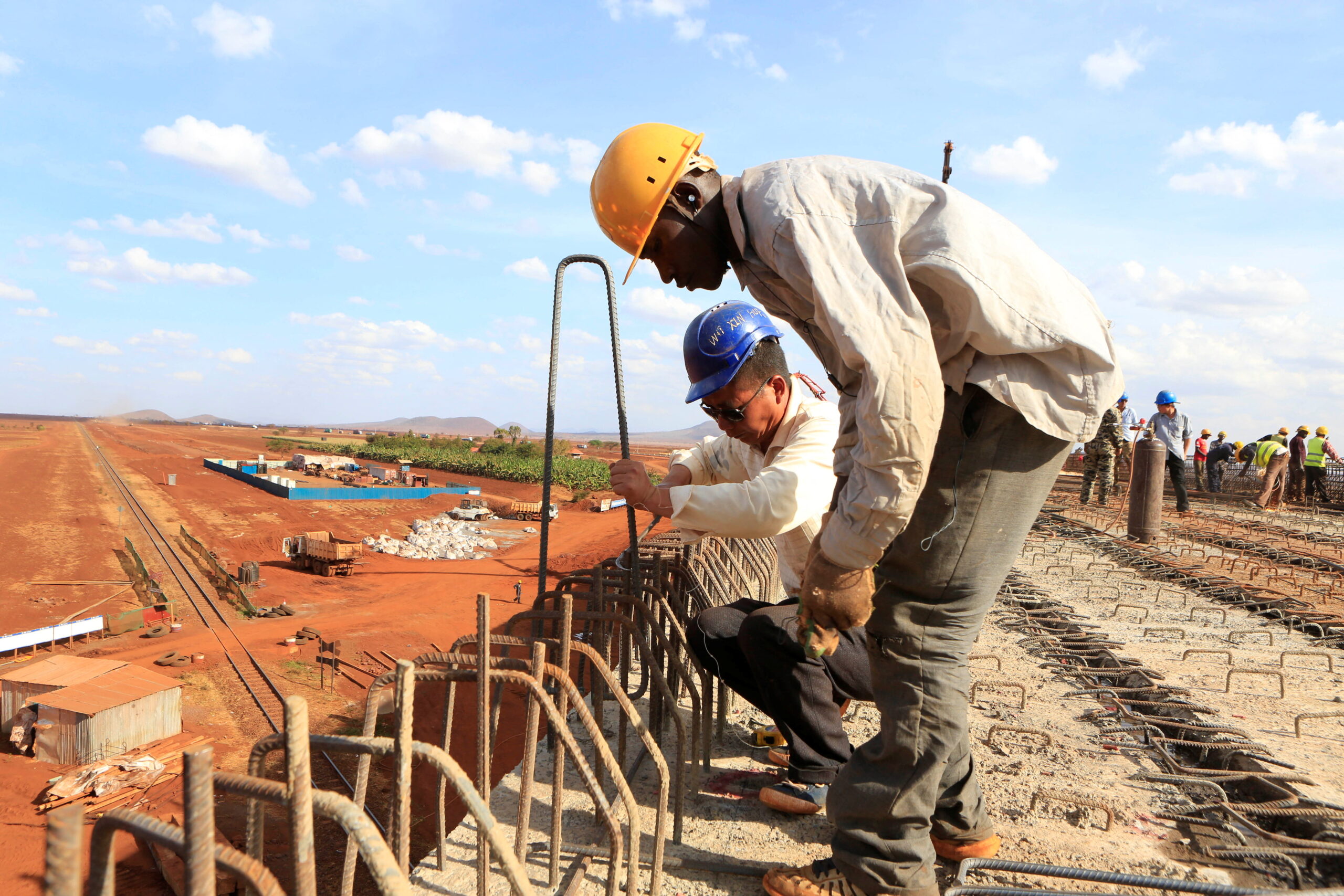By The ChinaAfrica Project
It’s been obvious in recent years that China has provided far more financing for African infrastructure development than any other country or multilateral development finance institution (DFI). Now, however, for the first time, we know how much more… and it’s a lot.
Between 2007 and 2020, Chinese funding for infrastructure projects in sub-Saharan Africa totaled $23 billion, according to a new report by Nancy Lee and Mauricio Cardenas Gonzalez at the Center for Global Development in Washington — more than twice as much as DFIs from the U.S., Europe, and Japan combined.
The gap between the U.S. and China was especially stark with lending from the U.S. Overseas Private Investment Corporation (the precursor to the U.S. Development Finance Corporation) at just 10% of China’s two main policy banks during that 13 year period.
The authors also soberly noted that there’s no evidence of any “upward trend” in U.S. infrastructure financing on the continent.
Contrary to widespread perceptions in the U.S. and Europe that China is responsible for financing coal and other carbon-emitting energy projects in Africa, the authors found that “China’s investment in renewables exceeded its investment in fossil fuels.”
Key Highlights From CGD’s New Report on Chinese Infrastructure Lending to Sub-Saharan Africa
- THE PROMISE OF PRIVATE CAPITAL REMAINS UNFULFILLED: “There is no indication that more of the vast amounts of global private equity and institutional investments is beginning to flow into sub-Saharan African (SSA) infrastructure. Nor is the multilateral development bank finance share growing, including in neglected infrastructure sectors like water, health, and education. And the US DFC remains a bit player in infrastructure finance in the region.”
- CHINA’S POSITIVE CONTRIBUTION: “China remains a major actor in SSA infrastructure finance, even with some pullback since the peak of 2017. Its outsized contribution to SSA infrastructure should be recognized and acknowledged as an overall positive, despite some problems with project quality and debt sustainability in some countries.”
- Center for Global Development: Stuck Near Ten Billion: Public-Private Infrastructure Finance in Sub-Sa
Chinese funding of sub-Saharan African infrastructure dwarfs that of West, says think tank
By Reuters
China’s development banks provided $23 billion in financing for infrastructure projects in sub-Saharan Africa from 2007 to 2020, more than double the amount lent by such banks in the United States, Germany, Japan and France combined, a new study showed.
The Center for Global Development think tank said a review of 535 public-private infrastructure deals funded in the region in those years showed that China’s investments dwarfed those of other governments and multilateral development banks.
Nancy Lee, lead author of the paper and a senior policy fellow at the center, said overall public funding for projects in sub-Saharan Africa remained stuck at around $9 billion, well short of what the region needs for roads, dams and bridges.
“There is a lot of criticism of China,” she said. “But if Western governments want to boost productive and sustainable investments to meaningful levels, they need to deploy their own development banks and press the multilateral development banks to make these investments a priority.”https://aff3e8a26a9f6d6580a196177ac2e13e.safeframe.googlesyndication.com/safeframe/1-0-38/html/container.html
Between 2007 and 2020, China Exim Bank and China Development Bank provided $23 billion in financing, while all other major development finance institutions combined provided $9.1 billion, the report found.
It noted that the main U.S. development finance agency, now known as the U.S. International Development Finance Corp, lent just $1.9 billion for infrastructure in the region during that period, less than a tenth of what China provided.
Multilateral development banks like the World Bank provided just $1.4 billion per year on average for public-private infrastructure projects in sub-Saharan Africa from 2016-2020, the report found.
China’s lending to Africa has come under heightened scrutiny in recent years for lack of transparency and its use of collateralized loans, with economists at the International Monetary Fund and World Bank warning that many low-income countries are facing or already in debt distress.
But Western countries have been slow to pump up investments despite “much rhetoric,” Lee said.
The administration of U.S. President Joe Biden in July unveiled a new push to expand business ties between U.S. companies and Africa, with a focus on clean energy, health, agribusiness and transportation infrastructure. But its ongoing review of trade policies has left the private sector skittish about committing funds.
A top U.S. trade official last week said Washington had been engaging in robust talks with Kenya as part of its drive to expand trade investment on the African continent, and would have more to say in coming weeks.
Reporting by Andrea Shalal, Editing by Rosalba O’Brien

